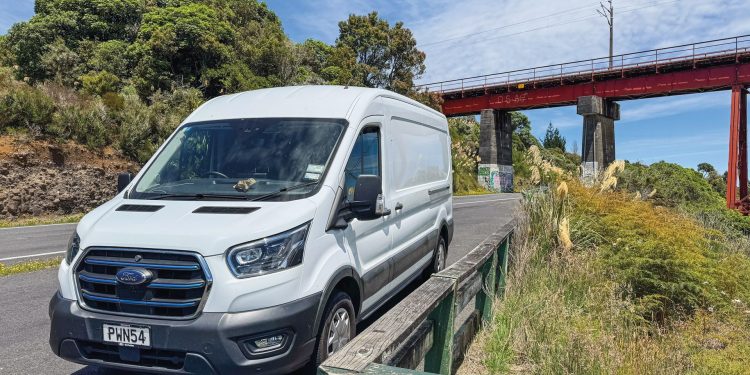2024 Ford e-Transit Cargo Review
Words: Richard Edwards | Photos: Richard Edwards
Camping trips are pretty much the Kiwi standard when it comes to summer holidays. But, let’s face it, they can be a little rough. Chances are you can’t get everything you need in the family wagon (one of my daughter’s favourite books is a Suzie Cato number involving such a scenario with Grandma being left behind).
Well, this year I did not have a choice (long story). So I took a slightly different tack, by borrowing the biggest van I could: specifically, the Ford eTransit Cargo. There was enough room for everything, including a king-size bed. No tent for me.
Why the electric version? I had a cunning plan. Electric vehicles can sit running for as long as their battery allows. Which means, having removed the cargo barrier and opened up the rear of the van to the cabin, we could sleep in air-conditioned comfort. The eTransit also features Ford’s ProPower with three 240-volt outlets providing up to 2.4kW which meant our beloved air fryer, kettle and coffee machine got to come too. Plug into a 240-volt outlet and you can operate for longer than any camping trip should last.
But can it do van things?
The Transit has long been the king of ‘large’ vans. The UK-based development team works closely with users to get things right. Features like sturdy rear grab handles, beefy steps and lots of storage for cups, documents and other accoutrements in the cabin all help.
The electric driver’s seat is excellent; the twin seat on the passenger side is okay, though it’s upright and in a fixed position.
I wonder, however, why there is a pocket in the door that clearly has the ability to destroy phones, yet looks perfect for your device. Ford has stickered it with a warning.
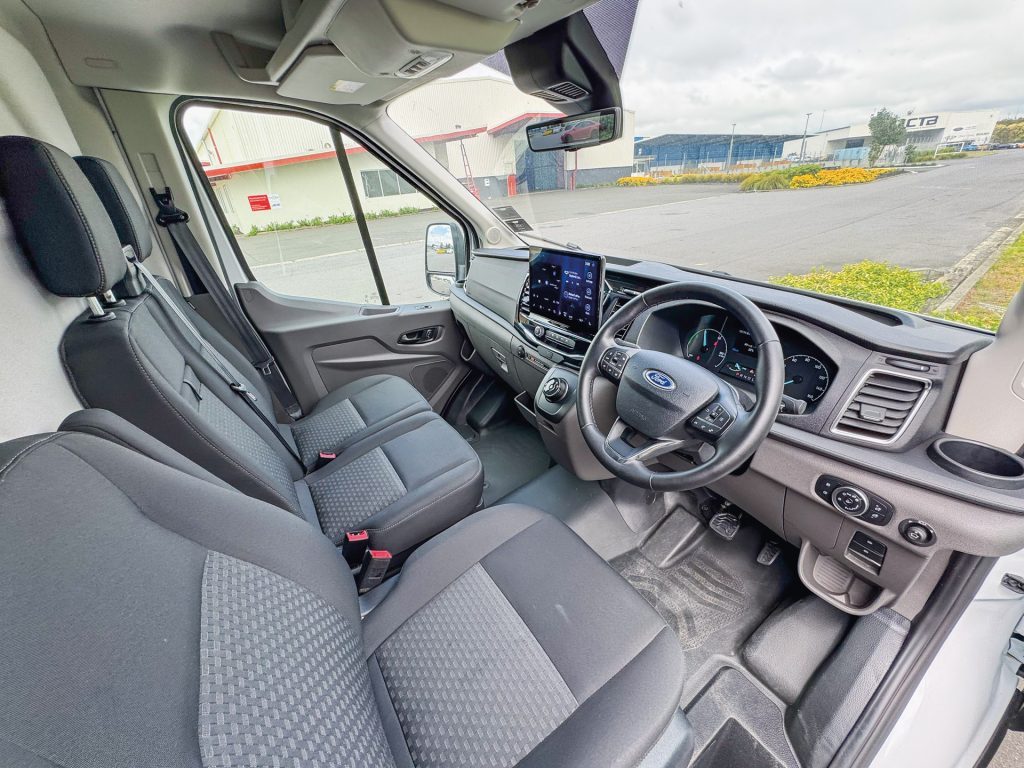
The load space is massive. There are five Transit sizes, differentiated by length and roof height. Our entry-level 350L has 10 cubic metres of space, with an internal width and height just short of 1.8 metres, and a load length just over 3.5 metres. You can go up to 14 cubic metres in other models. The eTransit only gets a sliding door on the passenger side, which is not ideal for some uses, though the rear doors are huge and can be locked in multiple positions.
The maximum payload is fine for delivery services and some trades at 838kg, though this is to keep this entry-level version registered as a light commercial. The largest models are registered as heavy vehicles, allowing for a 1298kg payload. The cab-chassis version can haul a hefty 1873kg.
Can it tow? No. Interestingly, while Ford of Europe rates it for 2000kg of towing, in New Zealand it isn’t rated to do so.
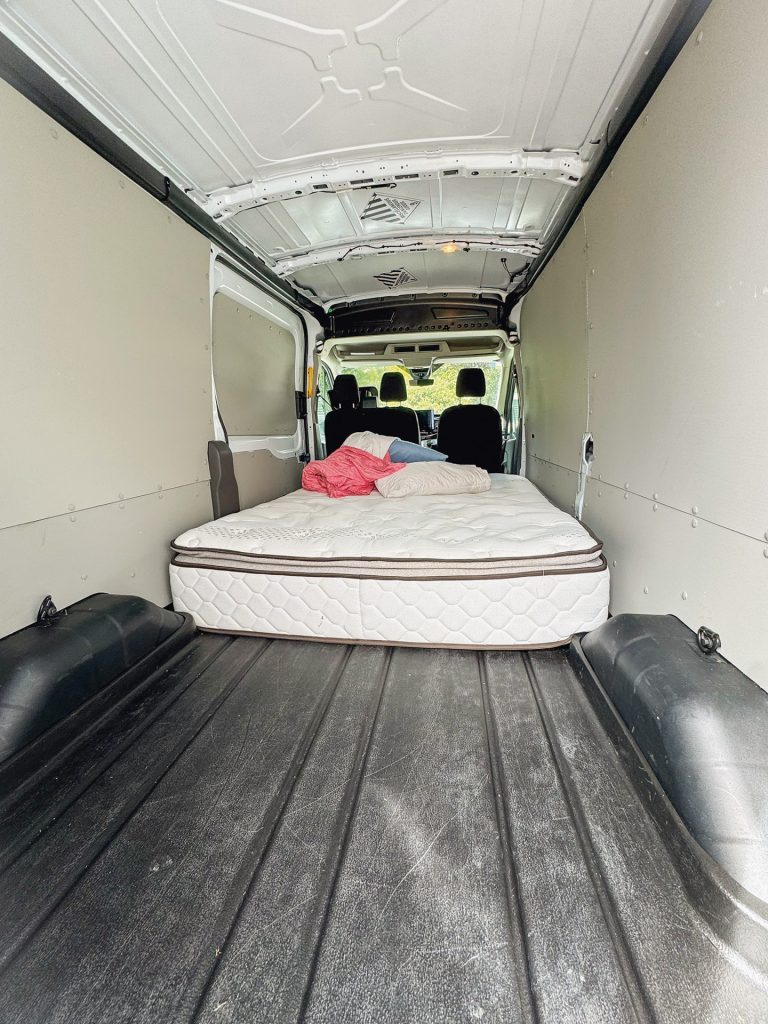
Sports van?
For a van, the eTransit feels surprisingly good to drive. Sporty, even. For starters, it’s rear-wheel drive with independent rear suspension; unheard of in van land. The primary advantage is ride quality. When unladen, the eTransit does not bounce like so many commercials with their traditional leaf-sprung rears. Through corners it sticks to its line and does not jiggle around. It’s an unusually good chassis for a commercial.
Then you have the electric motor, which is mounted between the rear wheels, eliminating the need for a driveshaft. It produces 198kW and 430Nm. Accordingly, it feels sprightly for something the size of a bedroom, running 0–100km/h in just over nine seconds.
The steering likewise feels quite accurate, with none of the dull centre you often find on large commercials.
You get a solid suite of driver-assistance features including adaptive cruise control, AEB with pedestrian detection and junction assist, blind-spot monitoring with cross-traffic and lane-change alerts, side-wind stabilisation assistance, and roll-over mitigation.
There is an excellent 360-degree camera system, including a great overhead rear camera, all running through the 12-inch infotainment screen, which also features wireless Android Auto and Apple CarPlay. FordPass, which gives you basic control of the van from your phone, is included too.
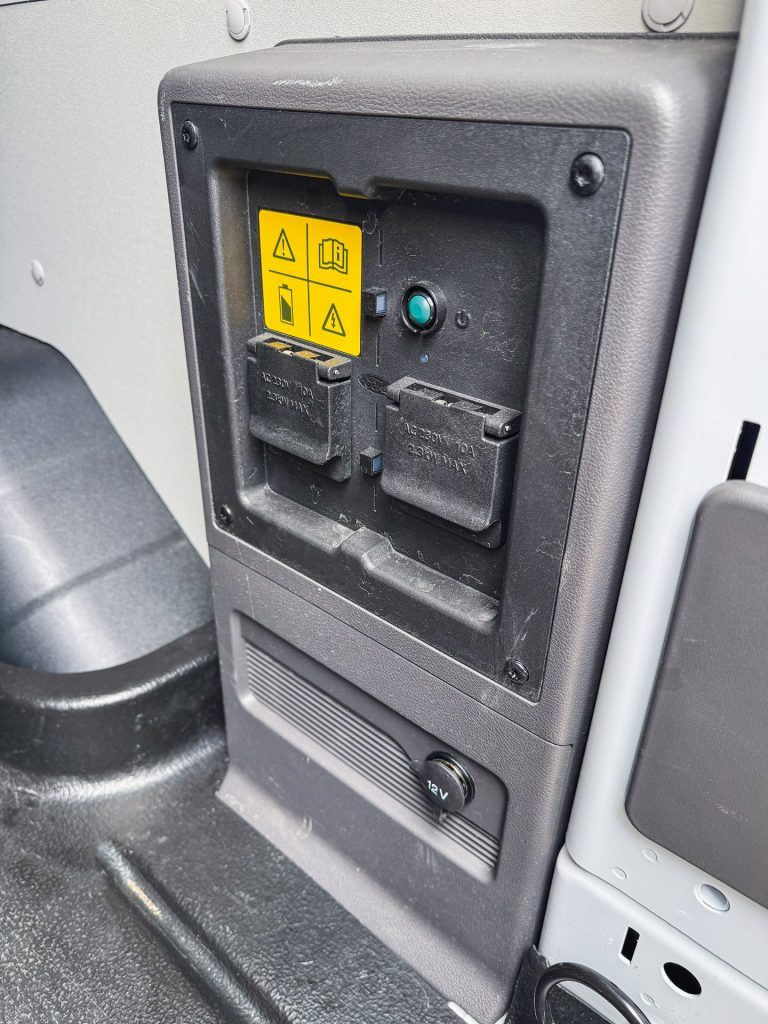
Is 250km enough?
If there’s a problem with the eTransit, it’s the battery. While Mercedes-Benz offers a Sprinter with a 113kWh pack, and LDV has options going up to at least 80kWh, Ford has opted for a 75kWh unit (68kWh usable). That translates to a claimed 250km range here, which around town seems doable. Slow speed is this van’s friend, with short hops possible in the low to mid-20kWh range.
While for most EVs hills are the enemy of range, the eTransit doesn’t seem to suffer too badly. Sure, consumption rises (often cresting 30–33kWh/100km) but that’s to be expected. Its mortal enemy is the 110km/h zone of the Waikato Expressway; pushing all that air eats energy, and consumption rose to around 38kWh/100km.
Still, the eTransit remains good for 200–230km on the open road. Is it enough? For us, yes. On a summer holiday, that’s a stop every two to three hours, kept short by reasonably quick 115kW DC charging (though 10.5kW AC is also an option).
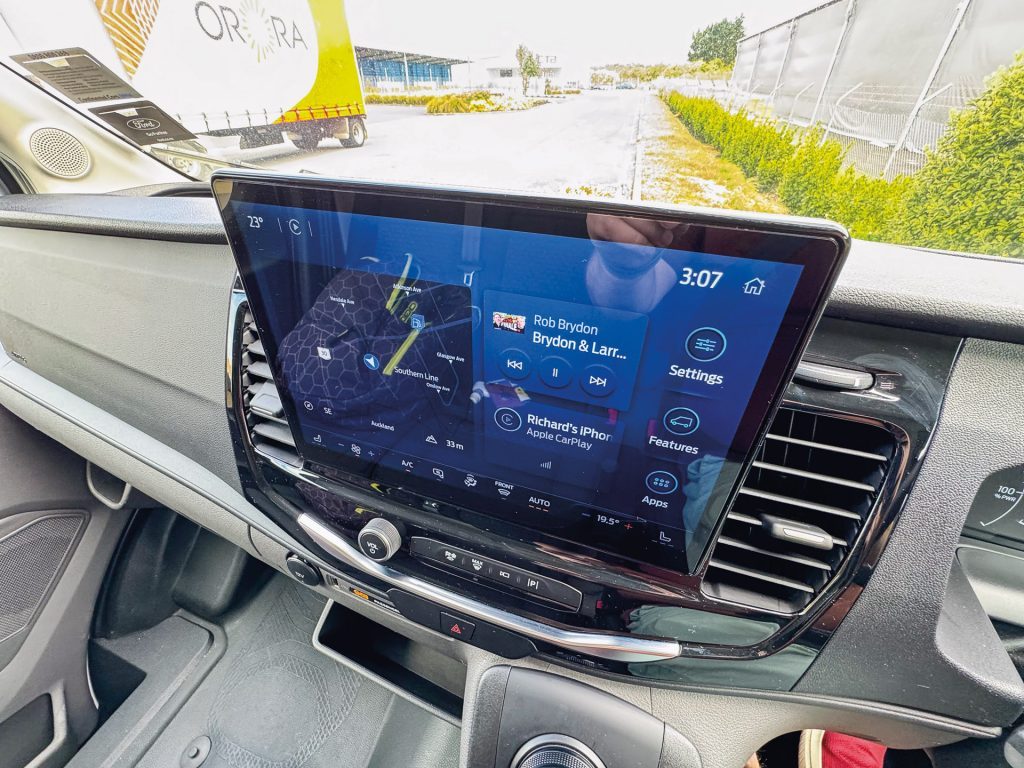
Would the diesel have been better?
For us, probably not. The advantages of the A/C and ProPower outweighed the diesel’s range benefit. If you were doing this run for work, you might choose differently.
For those on urban runs, the eTransit is worth a look. Aside from the benefit of not paying for diesel, it’s simply a better drive, with that handy power supply thrown in as well.
At $94,990, the eTransit carries a $14,000 premium over the diesel. However, for a business burning through multiple tanks a week, that difference could be easily absorbed.
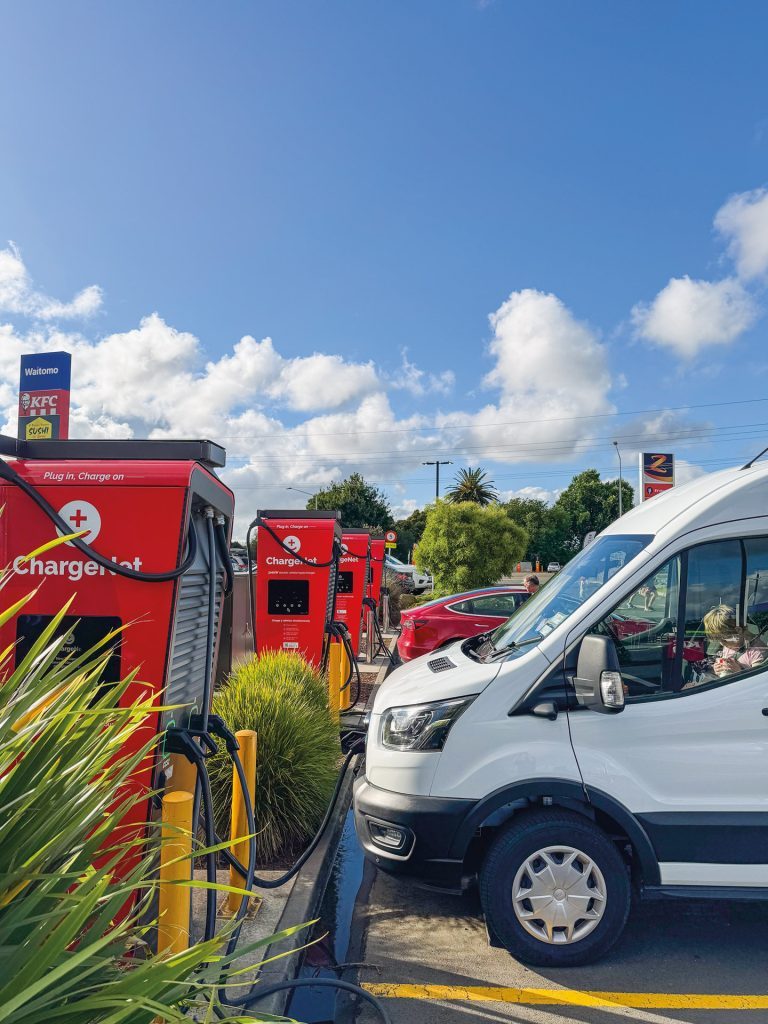
Ford etransit cargo
$94,990 / n.a.kWh/100km / 0g/km
0-100 km/h 8.9s
Motor 198kW / 430Nm
Battery 75kWh
Range 250km
Drivetrain 1-speed auto / RWD
Weight 2662kg


